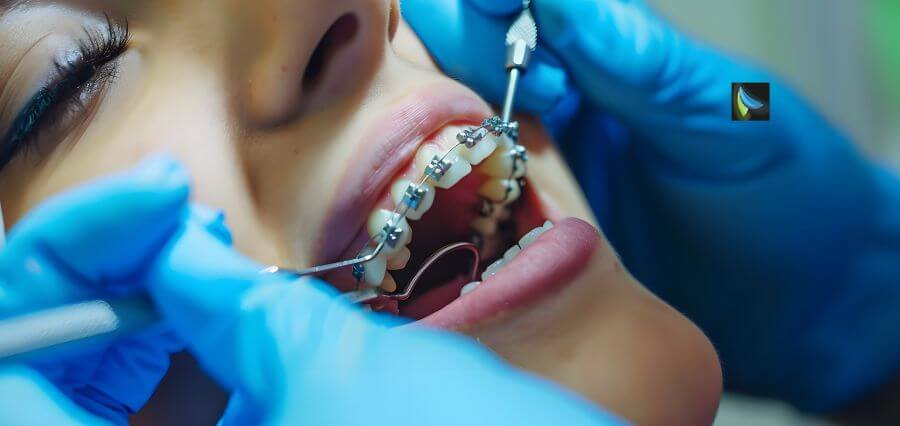When we think of dentistry, we often picture drills, X-rays, and those dreaded root canals. But beneath the surface of these common procedures lies a fascinating world of physics that plays a crucial role in maintaining our oral health. From the materials used in fillings to the lasers employed in modern treatments, the principles of physics are at work every time we sit in the dentist’s chair.
Forces and Pressure in Dental Procedures
One of the most fundamental concepts in physics applied to dentistry is the use of force and pressure. When a dentist extracts a tooth, they apply carefully calculated forces to break the periodontal ligament and remove the tooth from its socket. This process requires an understanding of leverage and torque to minimize damage to surrounding tissues.
Similarly, the pressure applied during tooth cleaning or filling procedures is crucial. Too much pressure can cause pain or damage, while too little may be ineffective. Dentists must have a keen sense of the appropriate force required for each unique situation, which comes from a combination of training and an intuitive grasp of physical principles.
Materials Science in Dental Restorations
The physics of materials plays a significant role in dental restorations such as fillings, crowns, and implants. Dental materials must withstand the intense forces of chewing and grinding while remaining biocompatible with the human body. Composite resins used in fillings, for instance, rely on the principles of polymer physics to create strong, durable bonds with tooth enamel.
Dental implants showcase the importance of material properties even further. The titanium used in implants must have the right balance of strength, weight, and biocompatibility. Its ability to osseointegrate—fuse with bone tissue—is a result of its unique physical and chemical properties, allowing it to serve as a long-lasting replacement for natural teeth.
Fluid Dynamics in Oral Hygiene
The physics of fluid dynamics comes into play in various aspects of dentistry, from the way saliva flows in the mouth to the design of dental instruments. Water picks, for example, use the principles of fluid mechanics to create a high-pressure stream of water that can effectively remove plaque and debris from between teeth.
Understanding fluid dynamics also helps in designing dental suction devices that efficiently remove saliva and debris during procedures. This not only improves visibility for the dentist but also enhances patient comfort and safety.
Optics and Imaging Technologies
Modern dentistry relies heavily on advanced imaging technologies, all of which are based on the physics of optics and electromagnetic radiation. Dental X-rays, for instance, use ionizing radiation to create images of teeth and jaw structures. The interaction between X-rays and different tissue densities allows dentists to detect cavities, assess bone loss, and plan treatments.
Newer technologies like cone beam computed tomography (CBCT) take this a step further, using X-rays to create detailed 3D images of oral structures. This application of physics allows for more precise diagnoses and treatment planning, especially in complex cases involving implants or orthodontics.
Lasers in Dental Procedures
The use of lasers in dentistry is perhaps one of the most direct applications of physics in the field. Dental lasers operate on the principle of stimulated emission of radiation, concentrating light energy to cut or vaporize tissue with extreme precision. Different types of lasers, such as diodes or Er:YAG lasers, are used for various procedures, from treating gum disease to preparing cavities for fillings.
Lasers offer several advantages over traditional tools, including reduced bleeding, faster healing times, and often less pain for the patient. The physics behind laser dentistry continues to evolve, promising even more advanced and patient-friendly treatments in the future.
Biomechanics in Orthodontics
Orthodontic treatments like braces and clear aligners rely heavily on the principles of biomechanics. The gradual movement of teeth through bone is achieved by applying consistent, gentle forces over time. This process involves complex interactions between the applied force, the periodontal ligament, and bone remodeling.
Understanding the physics of stress distribution and tissue response allows orthodontists to design treatment plans that effectively move teeth while minimizing discomfort and potential damage to oral structures.
In conclusion, the field of dentistry is deeply rooted in the principles of physics. From the fundamental forces applied during procedures to the cutting-edge technologies used in diagnosis and treatment, physics plays an integral role in maintaining and improving oral health. As our understanding of these physical principles continues to grow, so too will the effectiveness and comfort of dental care, ensuring brighter smiles for generations to come.


















